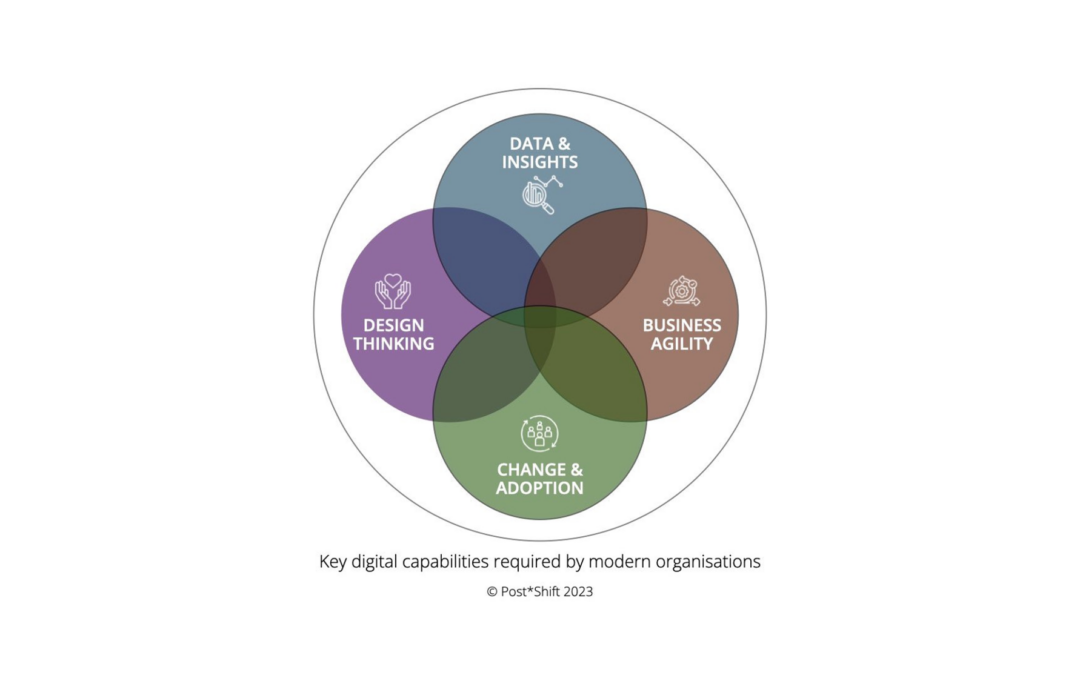Employees trying to up-skill face a real dilemma, one which becomes even more acute when their organisation is undergoing transformation: on one hand, they are caught in the prevailing cult of bare minimum learning, and on the other, the organisation’s ever-changing demands requires them to develop substantial new skills and competencies, often with limited guidance. This makes it difficult for employees to prioritise what to learn first to stay ahead. Even a brief exploration of the many new ways of working required for team success in the Digital Age can be overwhelming for both leaders and employees, so it is neither practical nor fair to put all the responsibility for choosing the right methods on individuals alone. Since teams are the key value drivers in modern organisations, we should perhaps also expect them to play a broader role in helping individuals understand their developmental path and prioritise future learning. So, what tactics can teams – not just individuals – utilise to ease the burden of upskilling?
Use ‘digital hotspots’ as a blueprint
Somewhere in your organisations there are teams who have evolved their ways of working to be more digital, agile and customer-centric… more aligned to delivering your future strategy. They can provide the basis of a great blueprint for high-priority up-skilling. What makes them fundamentally different from their co-workers? Systems? Techniques? Culture? Structure? Leadership? Create a simple blueprint of proven techniques to share with other teams. You can also encourage these digital hotspots to be places of experimentation with emerging ways of working – these teams tend to be more resilient to change and tend to be more savvy about forming experiments, assessing and then accepting (or rejecting) a new work methods. Engaging your digital hotspots in this way also raises their self-awareness, which can help them solve the next set of challenges they face when up-skilling themselves. This creates a basic transformation roadmap that can help less developed teams to understand the journey ahead, ensuring that the journey is tailored to the circumstances of the organisation and paired with the experience – good and not-so-good – of people who have been there. Starting a journey towards team awareness of new practices can be as simple as using a constellation exercise, mapping a customer experience, or unpacking the value proposition offered by the team. Using these digital hotspots as a model also has the advantage of the recommendations being ‘made here’ – teams have found a way to change and flourish despite the systemic barriers your organisation may face. The recommendations are easier for even skeptics to embrace. After all, it is hard to argue with someone who has worked through real-life, on-the-ground challenges and has emerged successfully.
Looking to Principles & Patterns to focus teams
For most teams, the future requires specific combinations of capabilities. For example, to build a digital delivery engine, a team needs to up-skill in a basic combination of design thinking (to make sure that the solution fits actual customer needs and is designed with empathy and real insight), agility (to ensure that we deliver to the customer as quickly as possible and integrate their feedback through iterations), digital adoption (to ensure that whatever we build is sponsored by leaders and used by those we designed it for to maximise value) and data-driven decision making (to ensure that we are measuring the impact and taking decisions based on customer and stakeholder adoption data moving forward). The fact is, that organisations cannot afford a linear approach to learning – one framework at a time, with time to turn theory into practice, experiment, iterate and embed, can take years. Using the idea of Principles and Patterns, we can focus on the overlap between these core capabilities, therefore avoiding an initial whack-a-mole approach. The four capabilities we highlighted above share three key areas of Principles & Patterns:
- Customer-centric: each of the four capabilities used to deliver value share an obsession with the customer. Focusing learning on new tools and techniques that also focus on the customer is therefore highly valuable in transforming the team. Once the basics of customer identification are done, you could choose to explore customer journeys, empathy mapping, customer dashboards or experience design as further learning points.
- Iterative & feedback-driven: although we most often associate iteration with agility, it is present in the other three capabilities as well. Design thinking encourages iterative cycles of ideation, while adoption requires us to test and iterate based on feedback and communications to ensure they fit with what we are learning about our customers, and continuous monitoring/adjustment based on data insights are core to data-driven decision making. Embedding this mindset fundamentally challenges us to become more self-aware as a team, and continually improve what we are delivering.
- Problem-solving: again, each of our four capabilities hold at their centre a need to solve complex problems that affect different people in different ways. They require us to challenge ourselves to solve human-centric problems using a variety of lenses, to bring empathy to our products and services.
So whilst each of these core digital capabilities has a different scope, time horizon, tech enabler and techniques, we can focus on these three Principles and Patterns to know that we have made progress towards better ways of working as a team. Where would you start helping teams chunk their capability development needs to make them less overwhelming?

